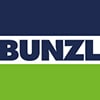Digital printing has developed quickly over the last two decades, with early printing presses first hitting the market in the 1990s. From small beginnings came a transformation in the printing world, as customers could then choose personalised, high quality and short run prints on a range of products.
Since the launch of the first digital press in 1993 (named ‘Indigo’), the industry has grown exponentially. HP invested $100m in Indigo in 2000, then acquired the remaining shares a year later for $629m. Under HP’s direction, digital printing equipment fast became both desirable and expected for both home and business use.
Some key dates
- Early-Mid 1980s – Black and white laser printers first introduced to offices and commercial environments. A number of companies got in on the act, including HP, Apple and IBM.
- Late-1980s – Desktop publishing software launched, the first of which was the PageMaker program by Aldus (later purchased by Adobe). This type of program allowed offices to create and print files cheaply, making any edits inhouse as required. However, the print costs remained expensive, as many companies could not afford to own commercial print equipment inhouse.
- 1985 – Canon release the BJ-80 printer, which was the first to use Bubble Jet technology. This used heat to form a bubble of ink inside the nozzle and then expel it at high speed onto the paper. Bubble Jet printers are still available today.
- 1988 – HP launched an inkjet for home users – the original HP DeskJet, which retailed at $1k. These weren’t without their share of problems, however, including clogged nozzles, ink flow and ink efficiency and was soon followed by the Deskjet Plus in 1989 and the DeskJet 500 in 1990, both of which aimed to solve these issues plus offer new features including faster print speeds and landscape printing. All of these offered black and white print options only.
- 1993 – the first colour laser printer was introduced – the ColorScript Laser 1000. It was really only viable for office use as it retailed at a staggering $12,499 at launch. this was soon followed by the Apple rival (of course, who else!); the LaserWriter, which was a (little) more affordable at $7k. As an aside, a used ColorScript Laser 1000 printer, originally priced at $12, 499, can now be bought on eBay for €145 ($159/£131). That’s depreciation for you!
- 1996 – 3D digital printers start to make their way to market, although only for commercial use. Z Corp, Stratasys and 3D Systems all released models in this year.
- 2003 – Kodak released the EasyShare LS633 camera, which could connect to the Kodak EasyShare Printer via a dock. This was the first printer/camera dock combination in the world.
- 2003 – also in 2003, HP introduced wireless printing for the Microsoft.NET Compact Framework and then Epson went one better, launching a wireless printer to the retail world.
- 2007 – hello inkless printing, thanks to ZINK imaging. These printers have to use ZINK consumables, however (i.e. paper, labels etc).
- 2010 – the digital printing market was valued at $85.2bn.
- 2011 – first 3D digital printer valued at under $1000 released by Roland DG, the iModela iM-01.
How it works
Digital printers print directly onto the desired medium, with no need for an intermediate material like a printing press.
Most typically, a digital printer will either be inkjet or dry toner based.
- Inkjet printers map miniscule droplets of ink onto the paper. These dots then make up the image you are printing. These droplets are most often between 50-60 microns – to give some scale, a cross-section of a human hair is 70 microns. They are very, very small!
- Dry toner-based printers use toner (obviously), which is a very fine, plastic-based powder that comes out dry (as you might have guessed by the name). This is heated inside the printer and then “melts” to the paper. The dots created by the toner are somehow even smaller than the droplets created by an inkjet printer, somewhere between 7-10 microns! This is equivalent to 0.007-0.01mm…. not even sure what we could compare that to. This is because smaller dots give a greater DPI and a higher clarity of the image.
Most home digital printers are inkjet models. Typically, home users do not need the additional clarity that dry toner-based printing offers and they are cheaper to buy, as well as the ongoing cost of ink vs toner. Printers used in a commercial environment, especially in areas such as graphic design, are more likely to be toner based for the additional clarity this brings.
The benefits of digital printing
Digital printing is now faster than ever, and variable print options mean that every ice pack we produce could potentially be different, which is great for companies who want to set themselves apart from their competitors
Our customers can also benefit from no setup costs or tooling, as we factor digital printing into our costs and MOQ, making branding a far more attractive proposition.
We welcome collaboration with any client wishing to develop their own label ice packs (see our Hydropac range for further info).
Related Links
